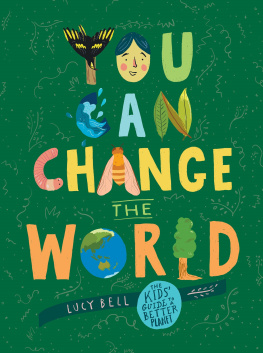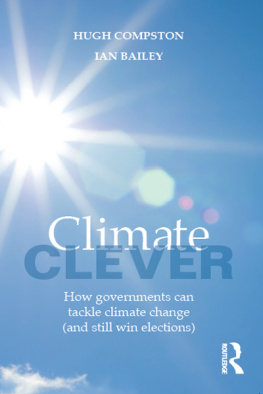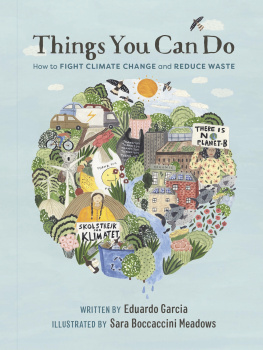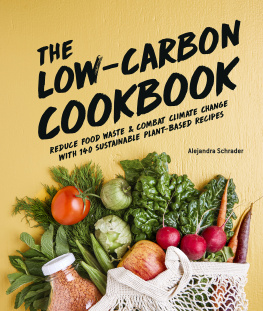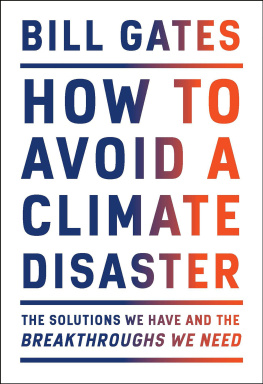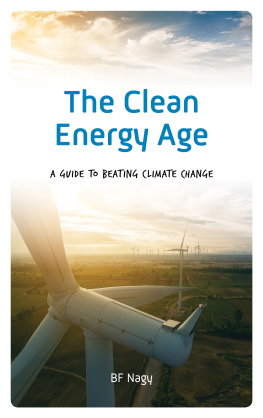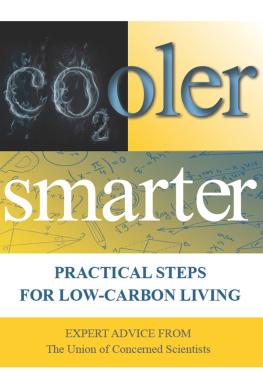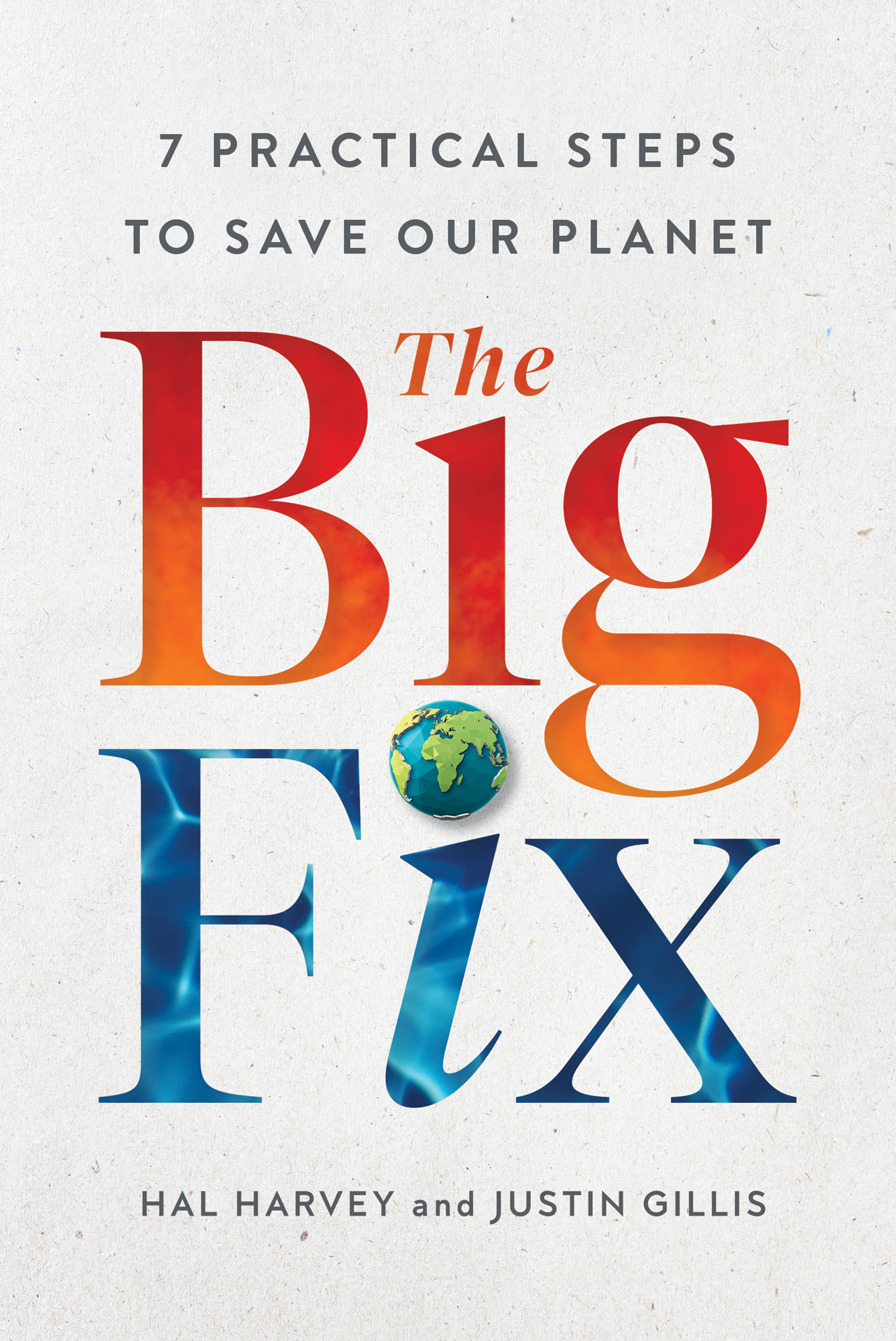Contents
Guide
7 Practical Steps to Save Our Planet
The Big Fix
Hal Harvey and Justin Gillis
Also by HAL HARVEY
Designing Climate Solutions: A Policy Guide for Low-Carbon Energy (with Robbie Orvis and Jeffrey Rissman)
Money Well Spent: A Strategic Plan for Smart Philanthropy (with Paul Brest)
Security Without War: A PostCold War Foreign Policy (with Michael H. Shuman)

Simon & Schuster
1230 Avenue of the Americas
New York, NY 10020
www.SimonandSchuster.com
Copyright 2022 by Justin Gillis and Hal Harvey
Charts by Raaziq Masud Brown
All rights reserved, including the right to reproduce this book or portions thereof in any form whatsoever. For information, address Simon & Schuster Subsidiary Rights Department, 1230 Avenue of the Americas, New York, NY 10020.
First Simon & Schuster hardcover edition September 2022
SIMON & SCHUSTER and colophon are registered trademarks of Simon & Schuster, Inc.
For information about special discounts for bulk purchases, please contact Simon & Schuster Special Sales at 1-866-506-1949 or .
The Simon & Schuster Speakers Bureau can bring authors to your live event. For more information or to book an event, contact the Simon & Schuster Speakers Bureau at 1-866-248-3049 or visit our website at www.simonspeakers.com.
Interior design by Kyle Kabel
Jacket design by Eric Fuentecilla
Jacket art from Shutterstock: Paper by Paladin12; Red Background by Chantapa3624; Water by SP Shutter; Earth by Kundra
Library of Congress Cataloging-in-Publication Data
Names: Harvey, Hal, author | Gillis, Justin, author.
Title: The big fix : seven practical steps to save our planet / Hal Harvey & Justin Gillis.
Identifiers: LCCN 2021055164 (print) | LCCN 2021055165 (ebook) | ISBN 9781982123987 (hardcover) | ISBN 9781982124007 (ebook)
Subjects: LCSH: Climate change mitigation--Citizen participation. | Environmental policy--Citizen participation. | Energy policy--Citizen participation. | Sustainable development--Citizen participation. |
BISAC: POLITICAL SCIENCE / Public Policy / Environmental Policy / SCIENCE / Environmental Science (see also Chemistry / Environmental)
Classification: LCC TD171.75 .H375 2022 (print) | LCC TD171.75 (ebook) |
DDC 363.738/746--dc23/eng/20220113
LC record available at https://lccn.loc.gov/2021055164
LC ebook record available at https://lccn.loc.gov/2021055165
ISBN 978-1-9821-2398-7
ISBN 978-1-9821-2400-7 (ebook)
We dedicate this book to everyone who is putting time, intelligence, and care into saving our planet from the ravages of climate change
Introduction
T he world is on fire.
The flames are hard to see, because we hide them so well. But you can hear themin the whine of jet engines as planes streak across the sky, in the rumble of power plants as they send electricity surging over power lines, in the purr of your car engine as you drive to work.
When the American military pushed Saddam Hussein out of Kuwait in 1990, after his ill-advised invasion, his forces set fire to hundreds of oil wells, causing a hellish conflagration. Smoke reached all the way to Europe, and the fires could be seen from the International Space Station, their intensity prompting comparisons to Dantes Inferno. Ten thousand firefighters and other workers spent nine months putting them out.
Yet at their peak, the Kuwaiti oil fires consumed only 2 percent of the fossil fuels that humans burn every day, all day, year in and out. Imagine fifty sets of Kuwait-sized fires burning around the clock, never stopping, and you get a sense of what humanity is doing to power our industrial civilization.
Every person living in a well-off country contributes to the conflagration. When you and your neighbors turn on your lights at night, a coal- or gas-burning power plant somewhere will likely increase its fuel usejust a smidgento supply the electricity. Take a shower, and the natural gas in your water heater will fire up. Drive to work, and the engine in your car will burn the distilled remains of long-dead swamp algae just a few feet in front of your face at the rate of six thousand tiny explosions a minutenicely muffled, mind you, but there all the same.
The clothes you buy, the warmth you enjoy indoors in the winter, and the coolness in summerall these comforts are derived from the flames we hide away in chemical factories, power plants, furnaces, and engines. If energy consumption were measured in matchsticks, each American would strike nearly 5 million matches a week. Even in a country like China, much poorer but catching up, the figure would approach 2 million.
Without meaning to, we have been heating up the world, as the gases from all these flames alter our atmosphere, trapping extra energy from the sun. And while many of us find it hard to connect our own activities to this slow-motion emergency, we are starting to feel the consequences in our daily lives: heat waves worse than any in recorded history, rising seas flooding major cities, a runaway increase in wildfires that are burning down homes, polluting the air, and cutting lives short. Polar ice caps are starting to melt, and the once-icy tundra is catching fire. We may be putting the worlds food supply at risk.
Humanity faces a profound moral and practical dilemma: How do we sustain the economic progress that has delivered billions of us from povertyindeed, how do we extend that progress to those still sufferingwhile quenching the fires that threaten our only home?
Many people are already trying to help, in their own waysperhaps by buying a Prius or an electric car, recycling diligently, installing smart thermostats, eating less meat, maybe contributing money to an environmental group. These actions are important, but by themselves they are not enough. The world will not be saved by conscientious green consumers who decide, one family at a time, to drive less or install solar panels on the roof. The problem is just too big for that.
Instead, we all need to become green citizens. We need to focus, together, on a relatively small number of public policies that can, over time, bring about sweeping change. And that requires a coherent plan, one that every concerned citizen, business leader, technical innovator, and politician can understand. With strategic clarity comes powerand, we hope, the will to accelerate the necessary changes and the skill to minimize the associated cost and risk.
The good news is that change has already begun to happen, in pockets across the globe. In Britain, for the first time since the nineteenth century, many weeks go by now without a single lump of coal being burned to generate power. The country that led the world into the Industrial Revolutionand its insatiable hunger for fossil fuelsnow seems increasingly determined to lead us out of that dependency.
Sometimes the changes we need are hidden away in closets: In Oregon, thousands of water heaters are getting new digital controls to allow them to compensate for variability in the electrical grid. When electrical demand is high, they hold back their energy appetites; when it is low, they power up and then store that heat until its required. This kind of innovation will help match demand on the grid to more variable supplies like wind turbines and solar panels. And nobody has to step into a cold shower.



